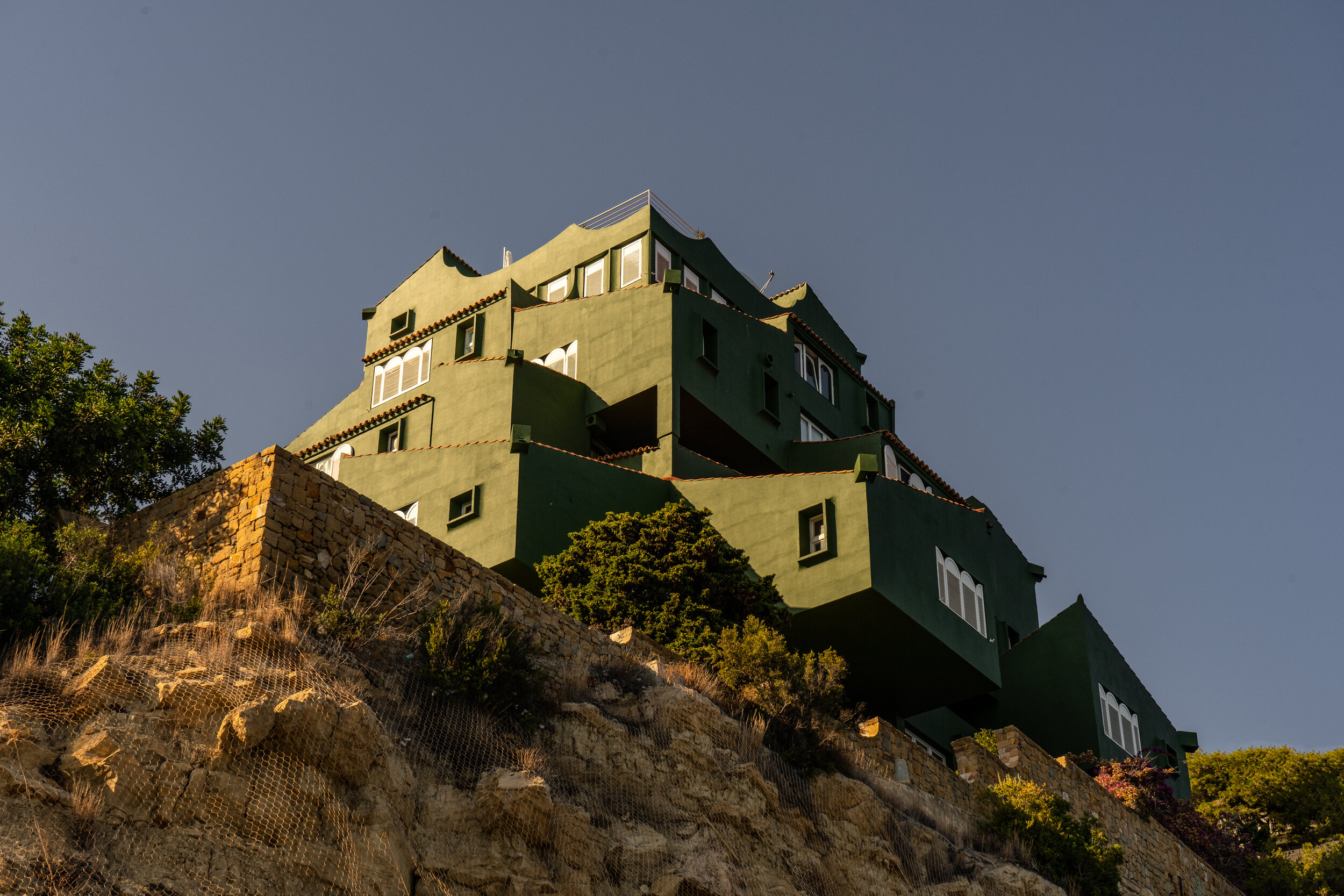
LIVING COLOURS:
EDIFICIO LA MURALLA ROJA
The Language of Colour in Architecture ; featuring a tour of La Muralla Roja
Words by Natalie Lam
Photography by Josep Pedro
Colour has never been detached from architectural design, and just like paintings, sculptures, and photographs, applying colours to the environment and architecture is believed to have a profound influence on the emotions of the people using the building or room.
Photography Credit:
This concept can be traced back to the Stone Age, where the prehistoric man was found using coloured pigments to create their own art, as a form of decorations within their own caves. Colour was later used lavishly in religious architecture, as a symbol of the sacred and power, due to a desire to glorify kings and gods, or to celebrate the marvel of the building itself. The application of colour was gradually replaced by the use of textured and colour material, including brick, limestone, concrete, metal, and marble, enriching the tones of each building to varying degrees.
LIVING COLOURS
“Colour can be used strategically to orchestrate spatial sequences or to visualise tectonics, it can support light and shadow, make surfaces an optical and haptic experience and much more. Colour is one of the oldest architectural design elements – colourless architecture does not exist.”
So, what role does colour and architecture play in modern cities? This is a question that I have been reflecting on since my visit to the La Muralla Roja in Spain, a masterpiece completed in the 1970s, by the renowned architect Ricardo Bofill. The La Muralla Roja sits along the coasts of Alicante in Spain, surrounded by clear blue waters, gold sandy beaches, and warm sunshine. From afar, the housing complex resembles a menacing fortress, painted in red, and rising from the hills that it is built on. Ricardo Bofill, the designer of the La Muralla Roja, held the impression that all modern buildings were designed with a similar style, with a monotone colour scheme that carried no personality.
Bofill wanted to use the complex to introduce a new genre of architecture in the city, resolving the urban and social concerns that arose following the Second World War. He established the Ricardo Bofill Taller de Arquitectura (RBTA), inviting architects, engineers, sociologists, and urban planners for cross-disciplinary collaborations, using political and social context as a framework for their designs. The La Muralla Roja was one of few projects within the La Manzanera development, where human-oriented designs were practiced, set out to rid us of alienation.
Often dubbed as “The Red Wall”, La Muralla Roja plays on the popular architecture of the Arab Mediterranean area, drawing aesthetic and cultural influences from the Mediterranean tradition of the casbah. In North Africa, casbah is the Arabic word for the central bastion of a city, a last place of defence. The complex is bordered with high walls and intricate trails, creating a fortress that is easy for its residents to defend, but difficult for intruders to attack. As a modern take on the traditional circulation of a casbah, Bofill created a labyrinth of interconnected walkways, staircases, bridges, and balconies that lead way to 50 different apartments within the complex, intending to remove the barriers between private and public used spaces.
Read the full interview in
New Norm Magazine Issue 03
In this issue we unfold a thread of personal thoughts and memories, streams of consciousness that influence their identities and narratives.
Featured interviews include Agnes Jonas, Barber & Osgerby, Instrmnt Applied Design, Gris, Klara Leidl, Koto Design, homework, WatchHouse, Ziu I. A , Onoko.
More from Issue 03
Related Content
In Biblical Lands - Uncovering Jordan by Rikke Westesen and Simon Foskjaer
Photographer Rikke Westesen and Simon Foskjaer takes us on a voyage through the dreamy landscapes of Jordan.
Slow Living - In Conversation with Vivian of WOOL
In this interview, Vivian Hung, the founder of WOOL, chats with us about Scandinavian designs and brands, the importance of retail, and tips on creating a stylish, contemporary home.







